Written by Antonia Egli (Dublin City University) and Anita Bušljeta Tonković (Institute of Social Sciences Ivo Pilar)
The MARGISTAR COST Action’s 7th Management Committee Meeting recently came to a close in Gospić, Croatia, this September. The meeting was hosted by MARGISTAR member Anita Bušljeta Tonković, who herself was born in Gospić and today works at the Institute of Social Sciences Ivo Pilar. Her scientific interests surround rural sociology, the sociology of development, and social ecology.
The meeting brought together MARGISTAR’s Management Committee and Working Group members to assess the COST Action’s progress and directions for its final year. The consortium focused on key updates from its Working Groups and covered activities planned for Grant Period 3, changes in internal structure, and the allocation of COST grants. Participants also discussed progress on the case study catalogue, recent and planned academic publications, and the current and future operation of MARGISTAR’s FAIRWAY in Europe platform.
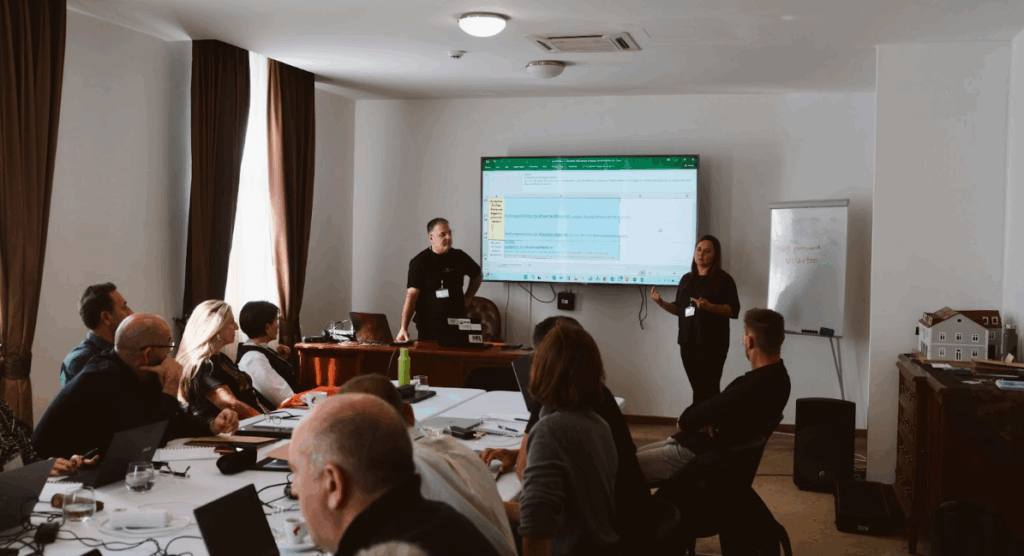
MARGISTAR discusses the final steps in compiling the COST Action’s Special Issues on Day 2
Kicking off with a warm welcome and two days of productive discussions, the meeting ended with a day in the field featuring the neighbouring Velebit mountain region and a presentation of the marginalisation challenges faced by the area nestled between the Mediterranean and Alpine zones.
MARGISTAR meets the Velebit Mountain Range
With its covered area of 2,274 km2 stretching from the north-west to the south-east of Croatia, Velebit forms the country’s largest mountain massif. To the west, it is flanked by the Velebit Channel on the Adriatic Sea, while its eastern side is covered by the Lika region. While expansive in length, the massif is not highly elevated – its highest point, Vaganski Vrh, reaches 1,757 m.
In 1978, Velebit was added to UNESCO’s World Network of Biosphere Reserves. Due to its unique relief, vegetation, and landscape, Velebit has been protected since 1981 as a nature park. The nature park in itself comprises a number of other protected areas, including two national parks (North Velebit and Paklenica National Park), nature reserves, a botanical garden, and more than 300 caves. Because of its impressive collection, Velebit is sometimes referred to as the ‘park of national parks’.
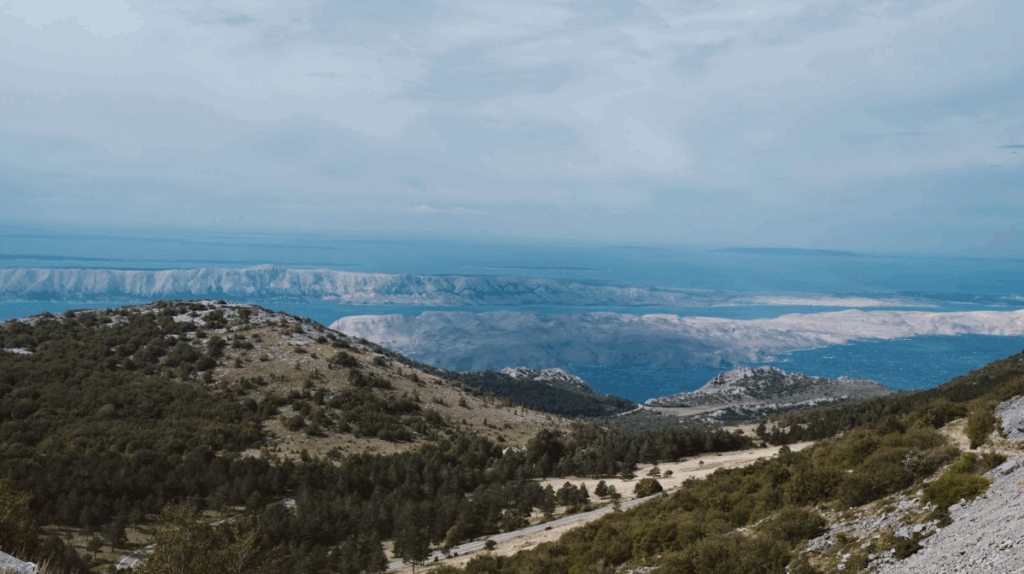
View of the Velebit Channel on the Adriatic Sea from the Baške Oštarije pass on Velebit mountain
Despite the region’s biological wealth, towns and communities in the Velebit region face numerous marginalisation challenges. Fragmented management between national, regional, and local authorities complicates conservation efforts, while land abandonment and population decline, an aging demographic, and younger generations leaving for other continental European cities in search of jobs, education, and better living standards add strain to an already underfinanced area.
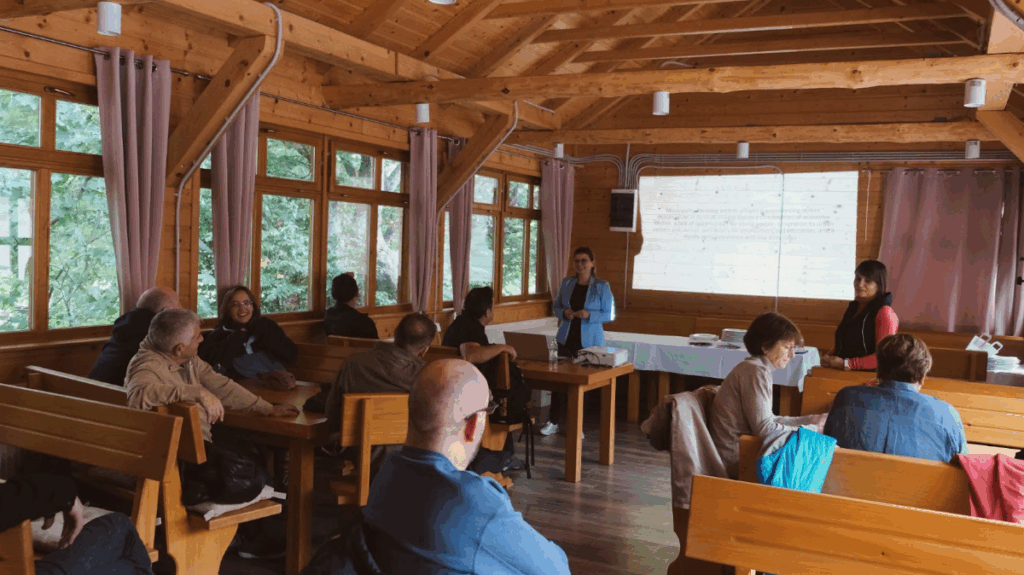
MARGISTAR members meet the Karlobag Municipality tourist board in Baške Oštarije – thank you, Ivana Delač Tomljenović!
Socio-economic fragility is worsened by a declining presence of local services, schools, and healthcare facilities. Tourism and conservation initiatives suffer from a lack of human capital, meaning fewer guides, rangers, entrepreneurs or general points of contact willing to implement socially and ecologically sustainable operations.
Many villages in and around Velebit are today partially or completely abandoned, leading to a loss of local knowledge, land stewardship, and traditional ecological practices that once maintained landscape balance. What used to be a relatively populated area now demonstrates the effects of emigration: throughout the region, traces and ruins of stables, sacred buildings, and cultural monuments are visible to hikers and travelers. The cultural landscape shaped by centuries of small-scale farming, herding, and stone building is fading, resulting in a homogenized landscape that is ecologically dense but culturally neglected.
This particular atmosphere in the region is no less influenced by the area’s most distinctive characteristic, the strong north-eastern wind, or Bura, which blows down the relief of Velebit towards the Adriatic Sea.
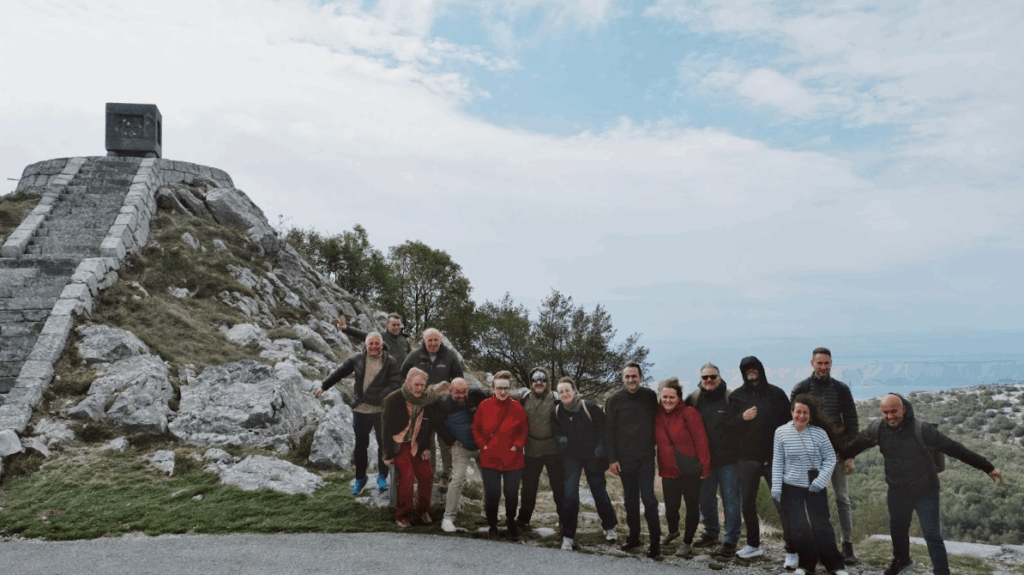
MARGISTAR members face the Bura by the Kubus monument at 927 masl, a cube on four spheres at the Baške Oštarije pass, which commemorates the construction of the Karlobag–Gospić road in the 1840s.
Similar marginalisation challenges have been observed across MARGISTAR member countries – more information is available in our Country Focus series. MARGISTAR members were empathetic in listening to the Karlobag Municipality tourist board in Baške Oštarije and will surely recall the experience in future discourses, challenging business-as-usual patterns towards societal and policy impacts.
Back to the City: MARGISTAR visits Gospić and Karlobag
Gospić is located on the western edge of the Lika field at the foot of the Velebit mountain range, making it a gateway to and part of the broader Velebit region. It also hosted the MARGISTAR consortium during the two-day Management Committee and Working Group meeting.
Located in the north-western mountainous part of Croatia, Gospić has grown from a traffic and military junction throughout the Ottoman and Austro-Hungarian Empires to the administrative and cultural centre of the Lika-Senj. Just as significantly, Gospić was for many years the home of scientist Nikola Tesla, who spent his school years in the town. The Nikola Tesla Memorial Centre in Smiljan has been telling the story of his time in Gospić and Lika since 2006, and tourists can also explore the school building and his old living quarters along the town’s main road.
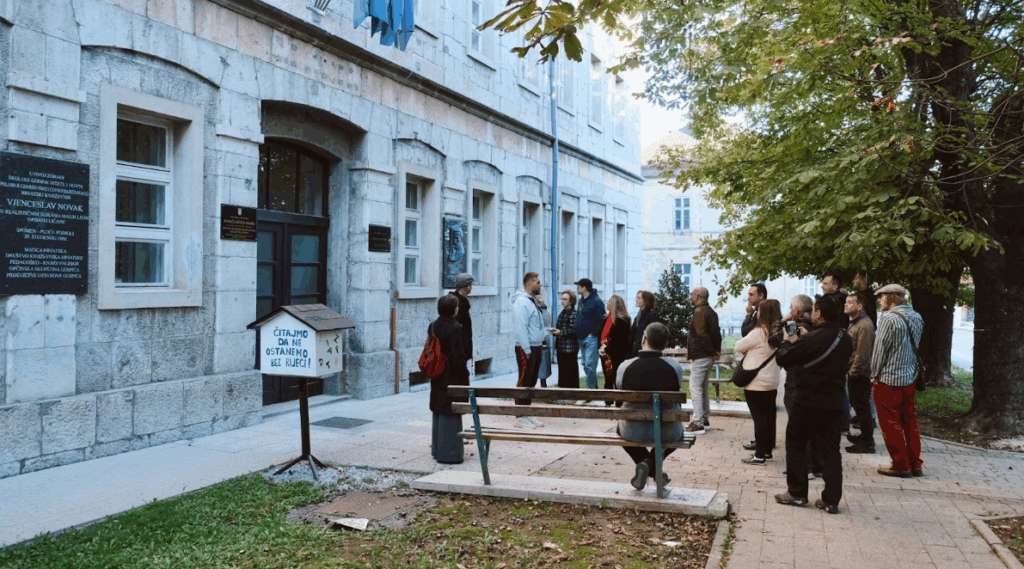
The school building once visited by a young Nikola Tesla
In addition to an informative walking tour through the town centre, MARGISTAR was also welcomed at the Museum of Lika and its collection of archaeological, cultural, historical, and ethnographic items in its galleries. Aside from processing, conserving, and showcasing the region’s cultural heritage, the museum also conducts research in archaeology, ethnography, and history.
Not far from Gospić and just along the Adriatic lies Karlobag. The 4th century Roman colony and ancient port on the Velebit foothill coast has today transformed into a popular tourist destination and remains an important milestone on the road connecting Rijeka and Dubrovnik. While the town also struggles with emigration, its churches and fortress remind visitors of days in which caravans passed through towards the central hinterland of Lika.
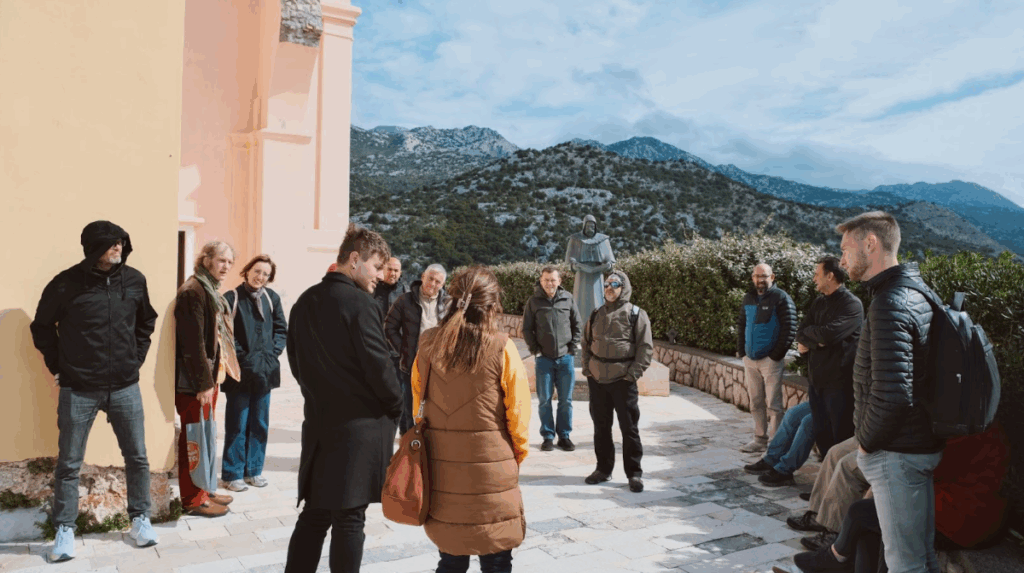
MARGISTAR members standing in front of the St. Karlo Boromejski church and Velebit mountain range in Karlobag
Overall, the visit showed MARGISTAR a range of new spaces, but equally demonstrated that the challenges of marginalised mountainous regions are comparable across Europe. The MARGISTAR case study collection will continue to pursue the compilation of exemplar challenges – stay tuned via our newsletter and or the interdisciplinary FAIRWAY in Europe platform for regular updates from the COST Action on the subject.


